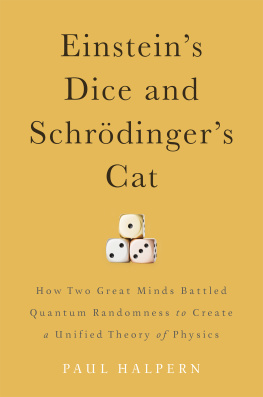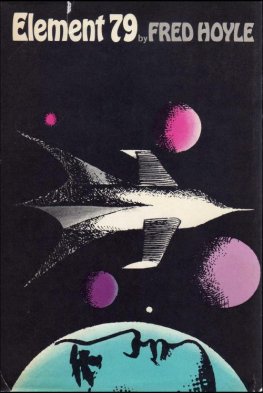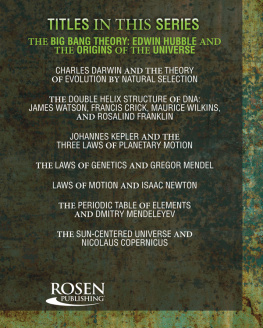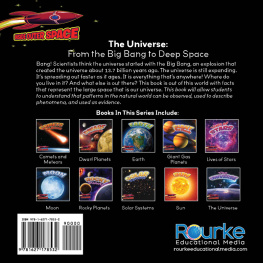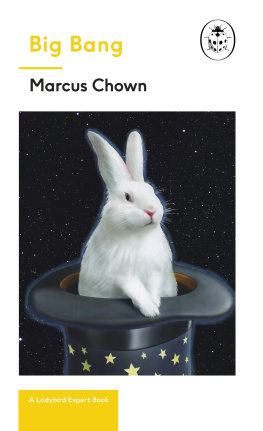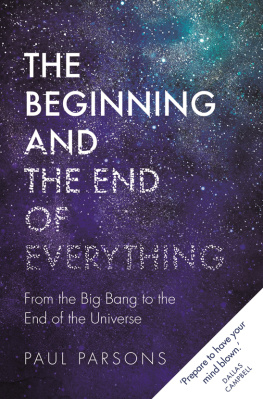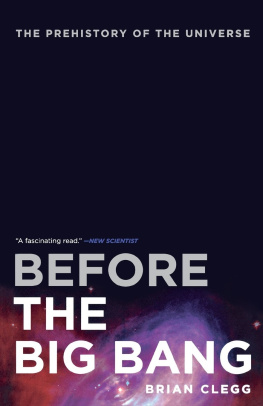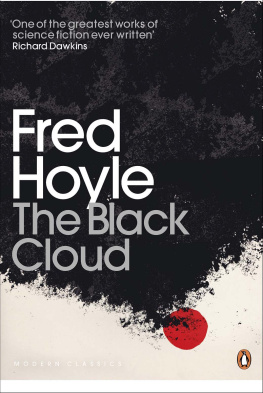Cosmology today is an established and exciting science, but in the mid-twentieth century it was looked at as somewhat disreputable. This engrossing book tells the story of the two audacious physicists who had the courage to envision the universe as a whole, disagreeing with each other but shaping our modern view of the cosmos.
S EAN C ARROLL , author of Something Deeply Hidden
Paul Halperns Flashes of Creation introduces us to the human side of the Big Bang: the debate about whether it happened and the effort to develop a consistent mathematical description of the early universe. Flashes of Creation is an engaging look at an important moment in the history of cosmology, and in the era of big data and large, diverse collaborations, it is a valuable retrospective of a distinctly twentieth-century approach to fundamental physics.
C HANDA P RESCOD -W EINSTEIN , author of The Disordered Cosmos
An astute and deeply researched account of the argument between two of the most colorful characters in twentieth-century science about the true nature of literally everything in existence. Flashes of Creation shows scientists at their most human, as they struggle to unravel riddles of cosmic importance.
P HILIP B ALL , author of Beyond Weird: Why Everything You Thought You Knew About Quantum Physics Is Different
Beautifully written and thoroughly researched, Flashes of Creation offers a fresh look at the mid-twentieth-century debatesometimes playful, mostly contentiouson the origin of our universe. Halperns engaging narrative and rich portrayals of the key participants adds a new and reverberating bang to the story of the Big Bang theorys triumph.
M ARCIA B ARTUSIAK , author of The Day We Found the Universe and Black Hole
A vivid and gripping tale of the origins of todays cosmology.
I AN S TEWART , author of Calculating the Cosmos
Paul Halpern adroitly weaves together the careers of two maverick scientists in this illuminating history.
F RANK C LOSE , University of Oxford and author of The Infinity Puzzle
Highly readable, entertaining, and informative, Paul Halperns latest book shows that even when grappling with some of the biggest questions, science is a human activity and all the better for it.
J AMES K AKALIOS , University of Minnesota and author of The Physics of Everyday Things
T HANKS TO THE FACULTY, ADMINISTRATION, AND STAFF OF U NIVERSITY of the Sciences for their continued encouragement, including Paul Katz, Jill Baren, Vojislava Pophristic, Elia Eschenazi, Jessie Taylor, and the other members of the Department of Math, Physics, and Statistics.
Many thanks to Igor and Elfriede Gamow, Elizabeth Jeanne Hoyle Butler, Geoffrey Hoyle, Sarah Burbidge, P. James E. Peebles, Robert W. Wilson, Arno A. Penzias, Kenneth C. Turner, Robert Wagoner, Jayant Narlikar, Donald Clayton, Stanford E. Woosley, Wendy Teller, Joanne Page, Cormac ORaifeartaigh, Nicholas Booth, George Pothering, and the late Freeman Dyson for sharing their fascinating recollections. Thanks also to Nancy Dicke Rapoport, John Rapoport, Chandra Wickramasinghe, Adam Crothers, Kathryn McKee, Anita Hollier, Virginia Trimble, Alan Chodos, David Cassidy, Brian Keating, Lyman Page, Bruce Partridge, Rainer Weiss, Ashutosh Jogalekar, Joseph Martin, Diana Kormos-Buchwald, Alberto Martinez, and the late E. Margaret Burbidge.
I deeply appreciate the preceding research in the history of cosmology and all of the libraries and archives that offered me assistance with this project, including St. Johns College Library, Cambridge; Princeton University Library Special Collections Rare Books Division; the George Washington University Special Collections Research Center; the Library of Congress; the Niels Bohr Archives in Copenhagen; and the CERN Archive in Meyrin, Switzerland.
I offer my sincere appreciation to Elfriede and Igor Gamow, representing the Gamow Estate, for permission to quote from George Gamows correspondence, and to Nancy Dicke Rapoport for permission to quote from Robert H. Dickes correspondence.
Many thanks to the extraordinary editorial staff at Basic Books, including TJ Kelleher and Eric Henney, and to my wonderful agent, Giles Anderson of the Anderson Literary Agency.
Thanks to my friends for their encouragement, including Fred Schuepfer, Pam Quick, Michael Erlich, Mari Errico, Simone Zelitch, Doug Buchholz, Lisa Tenzin-Dolma, Lindsey Poole, Greg Smith, Frank Cross, Mitchell and Wendy Kaltz, Mark Singer, Michal Meyer, Bob Jantzen, Boris Briker, and Kris Olson. Above all, my deep appreciation to my family for their support and advice, including Stanley Halpern, Arlene Finston, Eli Halpern, Thessaly McFall, Aden Halpern, and Felicia Hurewitz.
Discover Your Next Great Read
Get sneak peeks, book recommendations, and news about your favorite authors.
Tap here to learn more.

Explore book giveaways, sneak peeks, deals, and more.
Tap here to learn more.

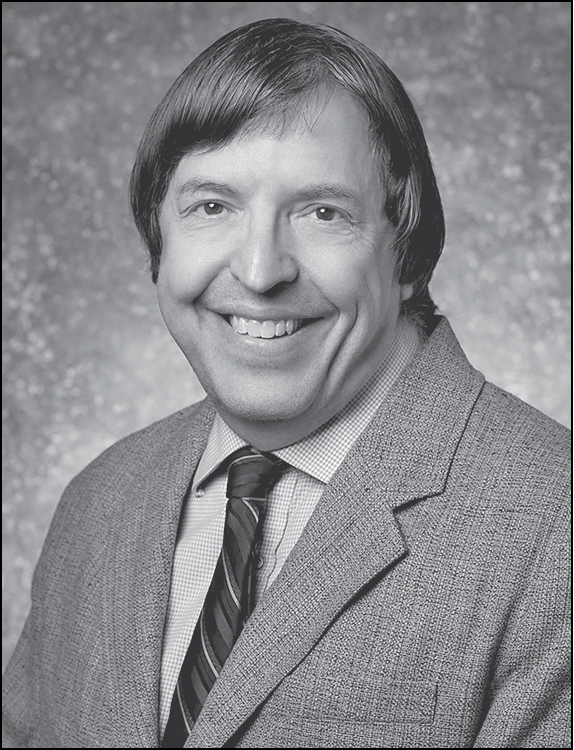
UNIVERSITY OF THE SCIENCES
Paul Halpern is a professor of physics at the University of the Sciences in Philadelphia and the author of seventeen popular science books, most recently Synchronicity, The Quantum Labyrinth, and Einsteins Dice and Schrdingers Cat. He lives near Philadelphia, Pennsylvania.
Alpher, Victor S. Ralph A. Alpher, George Antonovich Gamow, and the Prediction of the Cosmic Microwave Background Radiation. Asian Journal of Physics 23, nos. 1 and 2 (2014): 1726.
Bartusiak, Marcia, ed. Archives of the Universe: 100 Discoveries That Transformed Our Understanding of the Cosmos. New York: Vintage, 2006.
. Black Hole: How an Idea Abandoned by Newtonians, Hated by Einstein, and Gambled On by Hawking Became Loved. New Haven, CT: Yale University Press, 2015.
. The Day We Found the Universe. New York: Pantheon, 2009.
. Thursdays Universe: A Report from the Frontier on the Origin, Nature, and Destiny of the Universe. New York: Times Books, 1986.
Chown, Marcus. The Afterglow of Creation. Herdon, VA: University Science Books, 1996.
. The Magicians: Great Minds and the Central Miracle of Science. London: Faber & Faber, 2020.
Cline, Barbara Lovett. The Questioners: Physicists and the Quantum Theory. New York: Crowell, 1965.
Ellis, George. Before the Beginning: Cosmology Explained. New York: Boyers/Bowerdean, 1993.
Farmelo, Graham. The Strangest Man: The Hidden Life of Paul Dirac, Mystic of the Atom. New York: Basic Books, 2009.
Ferris, Timothy. The Whole Shebang: A State-of-the-Universe Report. New York: Simon & Schuster, 1997.
Gamow, George. The Creation of the Universe. New York: Viking, 1952.
. My World Line: An Informal Autobiography. New York: Viking, 1970.
. Thirty Years That Shook Physics: The Story of Quantum Theory. New York: Doubleday, 1966.
Gough, Douglas, ed. The Scientific Legacy of Fred Hoyle. New York: Cambridge University Press, 2005.
Greenstein, George. Portraits of Discovery: Profiles in Scientific Genius


